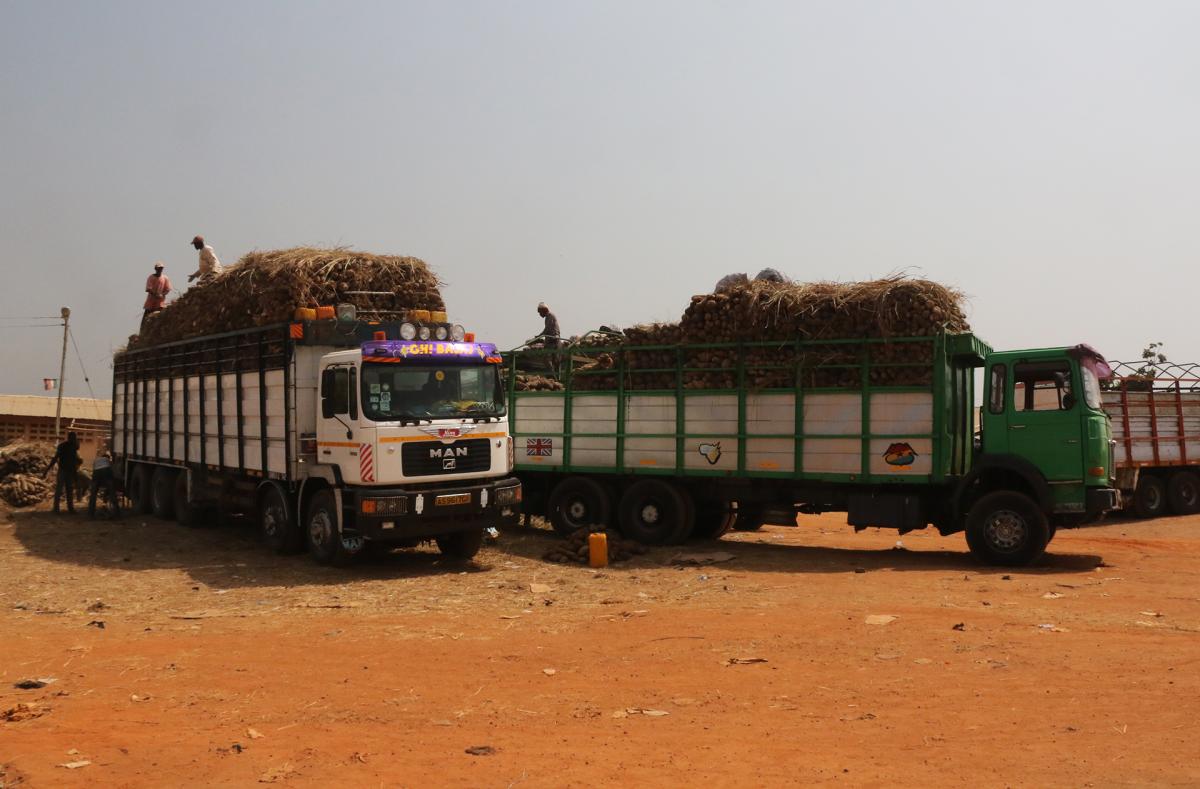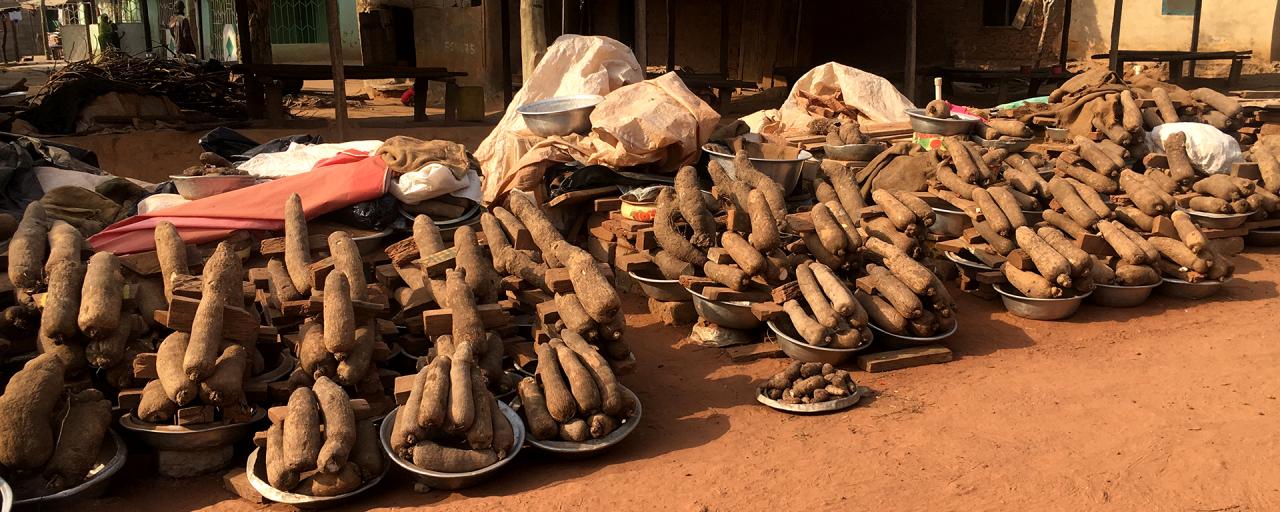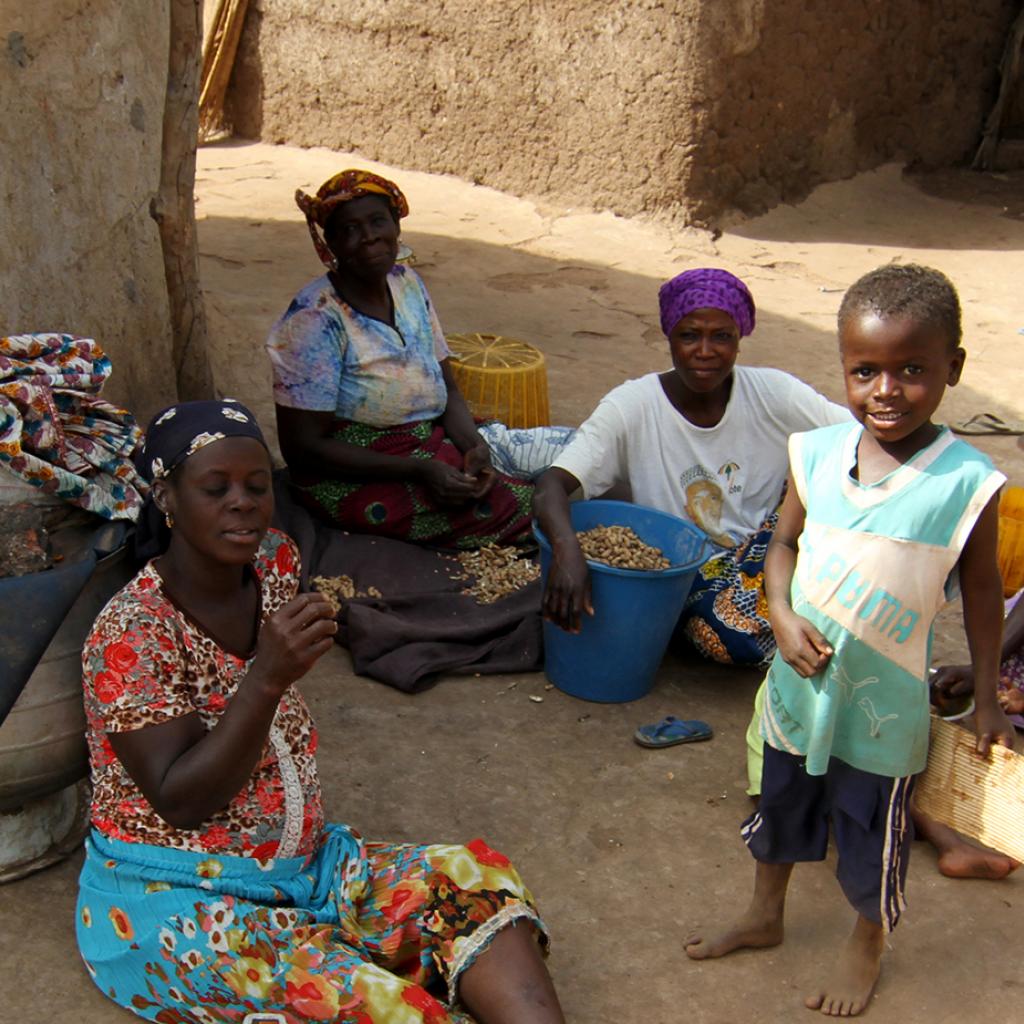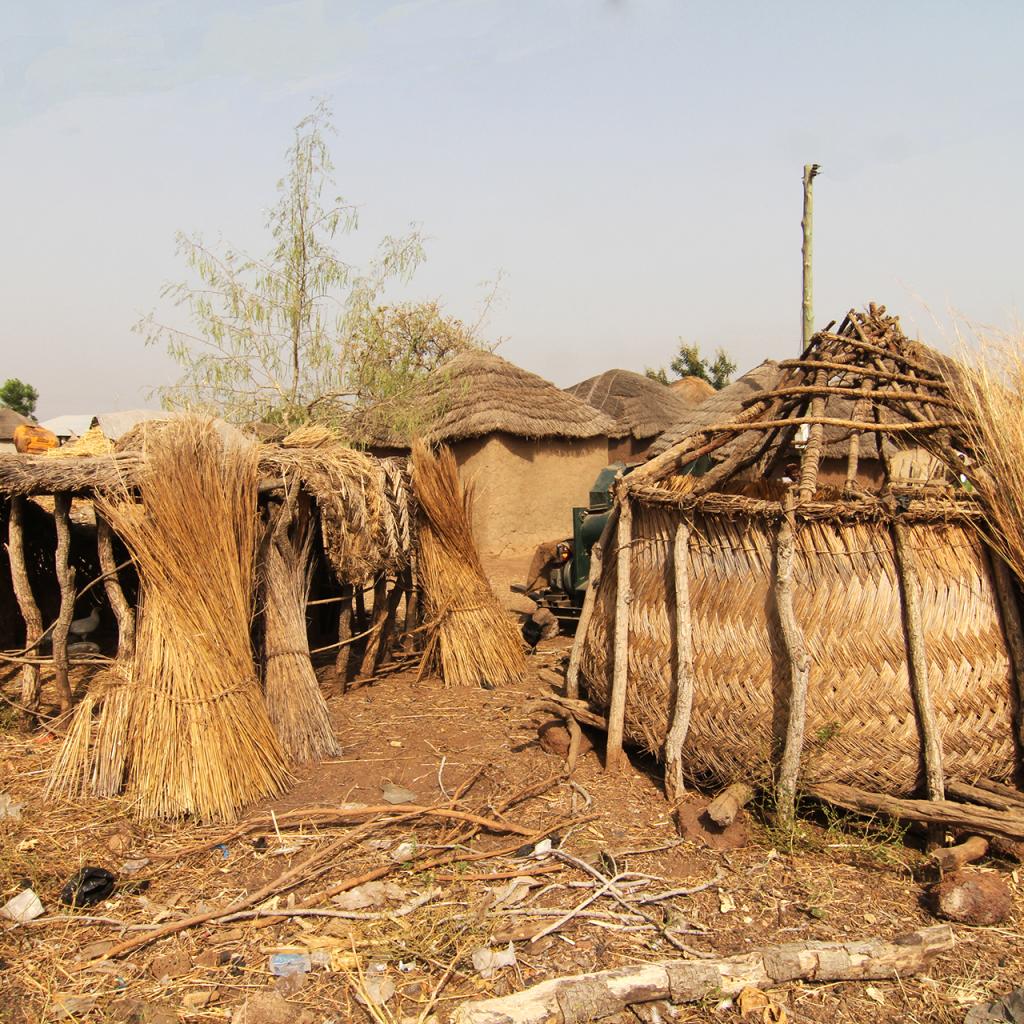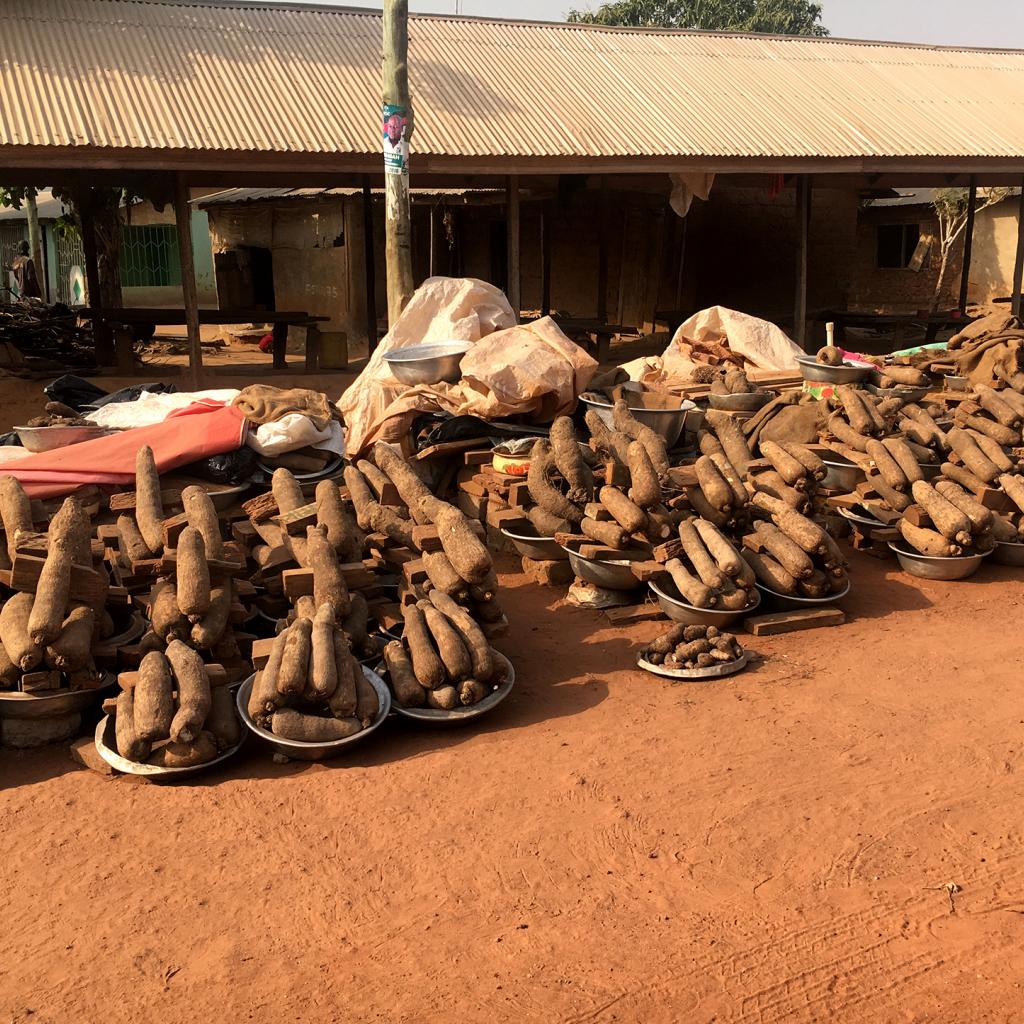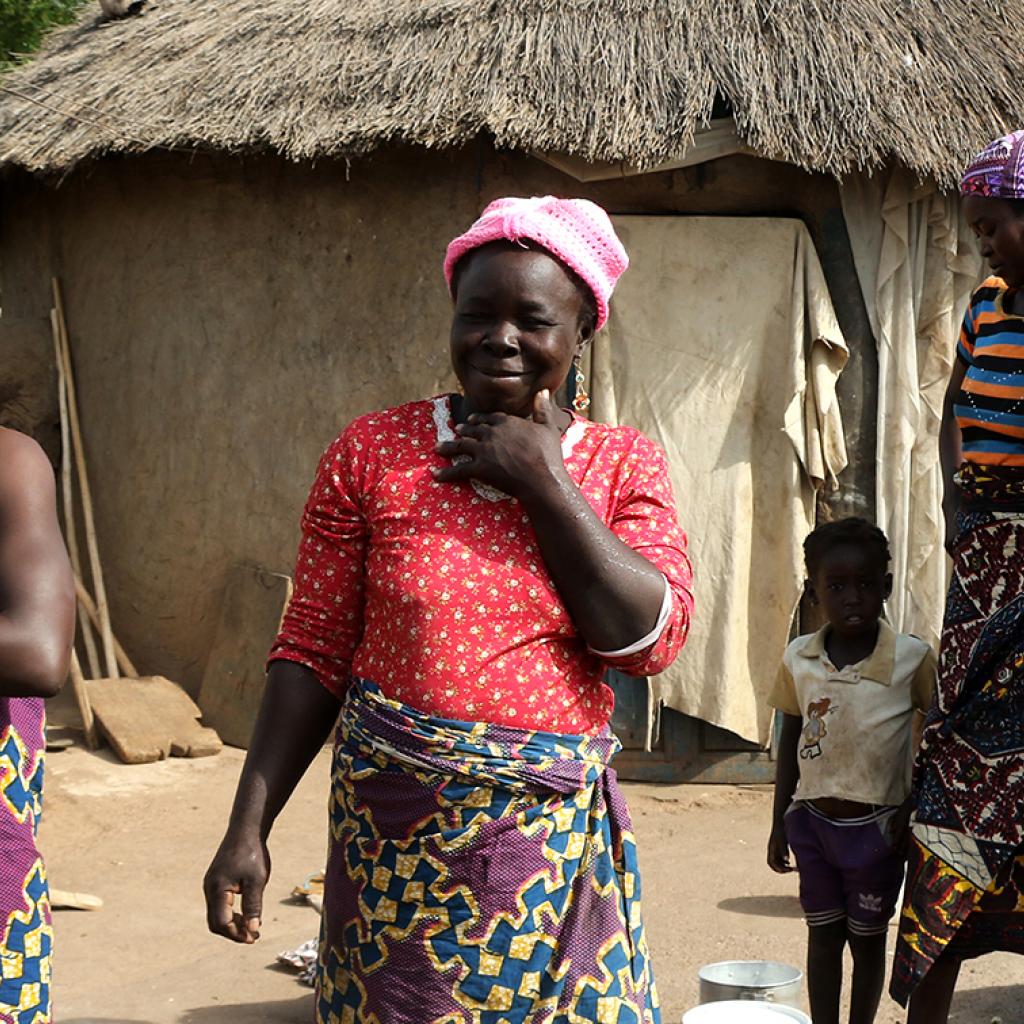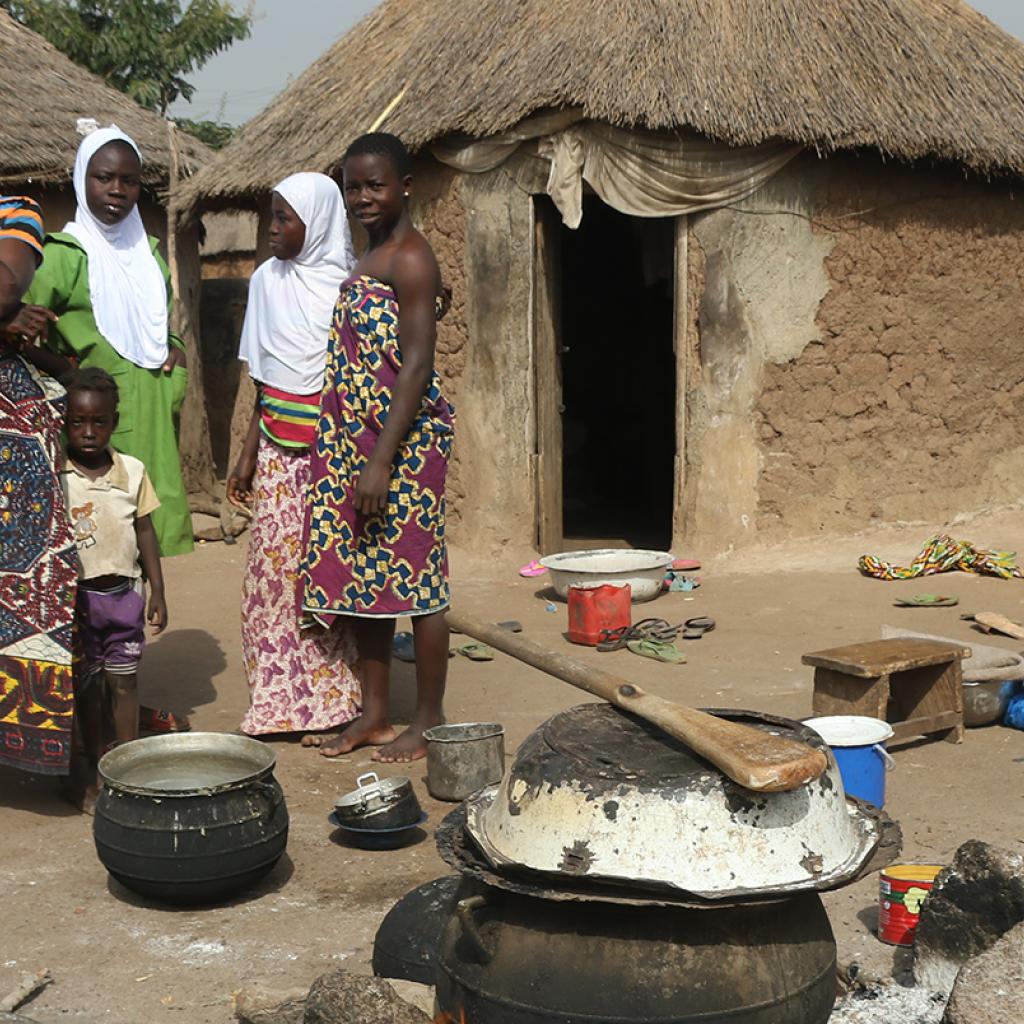The Konkomba are a population of farmers and they cultivate every strip of land available, the borders of a village extend to the fields of the neighboring village, leaving not even one yard of uncultivated land.
The cultivation of the land is the main means of subsistence of the population, that is why the Konkomba practice the cult of the earth and build numerous "earth sanctuaries" to pay homage to it.
Most of the Konkomba are yam producers and sellers and they are famous for the yam markets they set up in the big cities of Ghana, these markets, that come to life in large areas free of vegetation by the roadside, are not just an economic initiative but a real social event.
People gather at the market to meet friends or relatives living in nearby cities or villages, drink beer and trade the yam of course, but also other agricultural products.
Even in Accra, the capital of Ghana, there is a very important Konkomba market.
Each Konkomba market is regulated by an Utindaan, an elder who supervises and approves operators who wish to trade in the market; the Utindaan is the supreme authority of the market and manages all logistical issues, the layout with the provision of market stalls and any disputes between operators.
Another task entrusted to the Usindaan is the supervision of the offers made at the market sanctuary, a baobab tree.
The market has also a president or Onekpel, who has the task of fixing the prices of the various types of yam for sale, taking into account the demand and supply of the product, but also the costs incurred by the producers for the transportation up to Accra.
The yam is the basis of the nourishment not only of the Komkomba but also of other populations of Ghana,Togo, Benin, Nigeria, Niger, Burkina Faso and other West African countries; this tuber rich in starch is an important source of protein, vitamins and minerals.
The yam is a very resistant plant and it is available all year round and therefore a fundamental and more reliable food source than some seasonal crops.
This tuber is cooked before being eaten; it can be cooked in different ways: boiled, stewed, roasted or fried; it is usually consumed with sauces or savory dishes.
It is also dried and then reduced to flour with which a kind of insipid polenta is prepared, or soups, puddings or other types of desserts.
